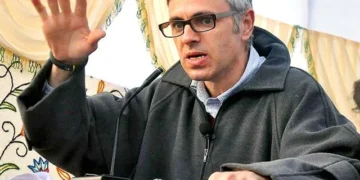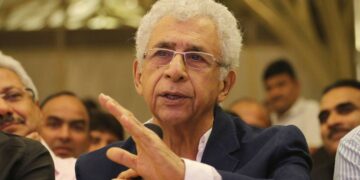The 14th Dalai Lama’s trip to Ladakh may be extended till September due to heavy rains in Dharamshala and in wake of the tumultuous public reception given to the head of the Gelug sect of Tibetan Buddhism.
While the strategic community is waiting for the Dalai Lama to merely utter the word China during his Ladakh trip, the Living Buddha of Compassion has delivered three days of sermon to his followers and visited a monastery at Padum in the Zanskar region today. That Beijing apparently irked with his travel to Ladakh is a matter of little consequence to the 14th Dalai Lama, who appears to be at peace in the high mountain desert.“When we landed on July 15, the entire road from Leh to Shewatsei monastery was lined up with people and it took his Holiness nearly 90 minutes to make what is normally a 15 minute ride. His Holiness asked the driver to go slow so that he could see his people and they in turn could see him,” said a close aide of the 14th Dalai Lama.
The 14th Dalai Lama, however, is not going towards Pangong Tso due to his 87 years and will confine himself to Leh as the dry climate suits him.
Addressing a large gathering at the teaching pavilion earlier this week in Zanskar, Ladakh, Dalai Lama said he has the responsibility to help the residents in whatever aways he can. He stressed that the teachings will only benefit if the listeners also practice what is said.
Because the people of Zanskar and Ladakh have placed their faith and trust in me,” he said.“I have a responsibility to do whatever I can to help them. And the best way I can do that is by giving teachings for their benefit. However, listening to teachings is only helpful if we also try to put them into practice, which is what I have tried to do throughout my life. The key point is to cultivate a warm heart and achieve peace of mind.”In June, Dalai Lama invoked Avalokiteshvara, the bodhisattva who embodies the compassion of all Buddhas, to talk about the deep connection with Tibet.The final goal, he said, is the attainment of enlightenment, and to reach it we must combine the “awakening mind, which constitutes the method aspect of the path, with an understanding of emptiness, which comprises the wisdom aspect of the path.”
We need to keep both these aspects of the path in mind and train ourselves to cultivate the path to enlightenment in life after life. In my own case I reflect on the awakening mind of bodhichitta and the wisdom understanding emptiness the moment I wake up every morning.”























